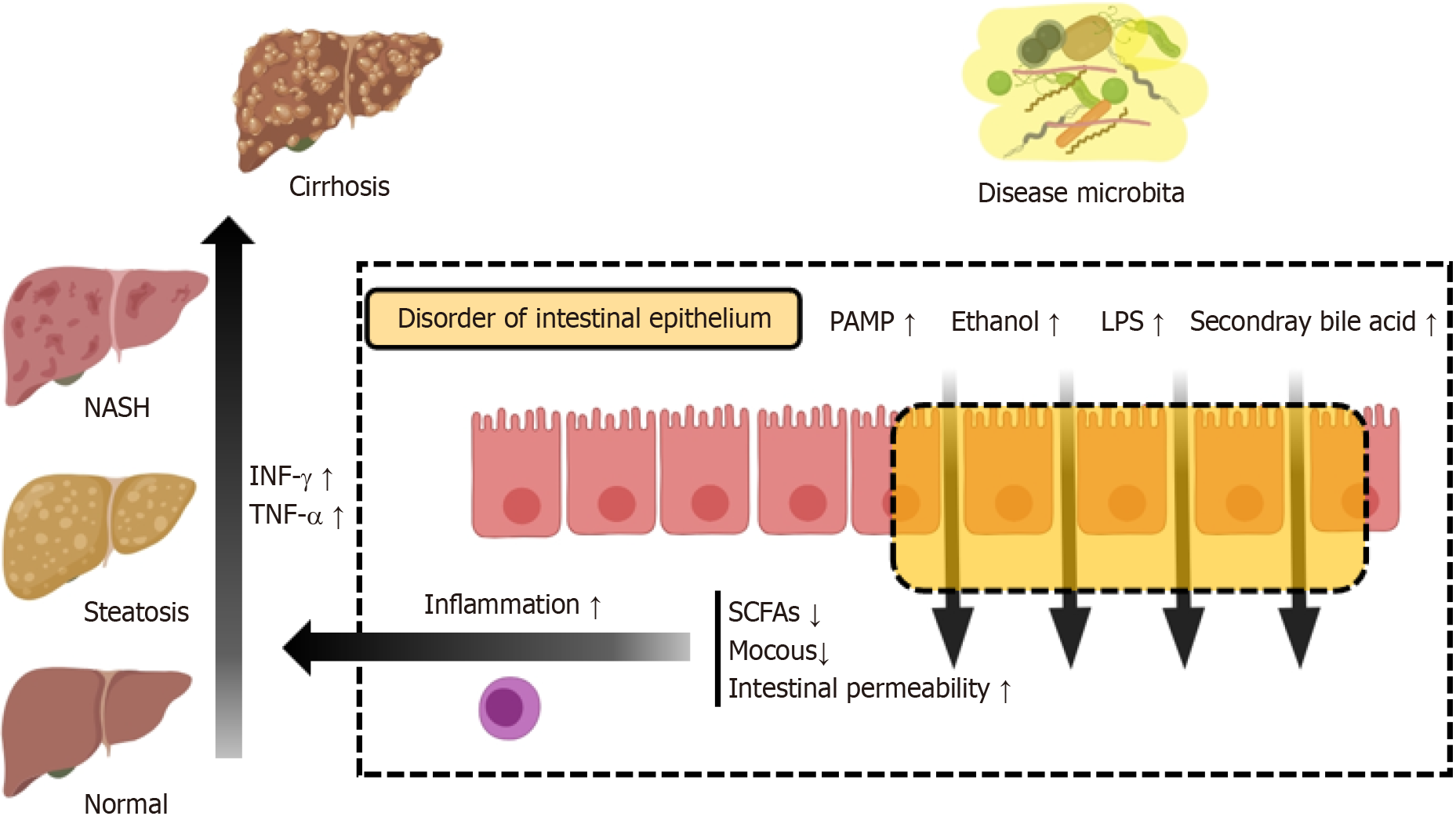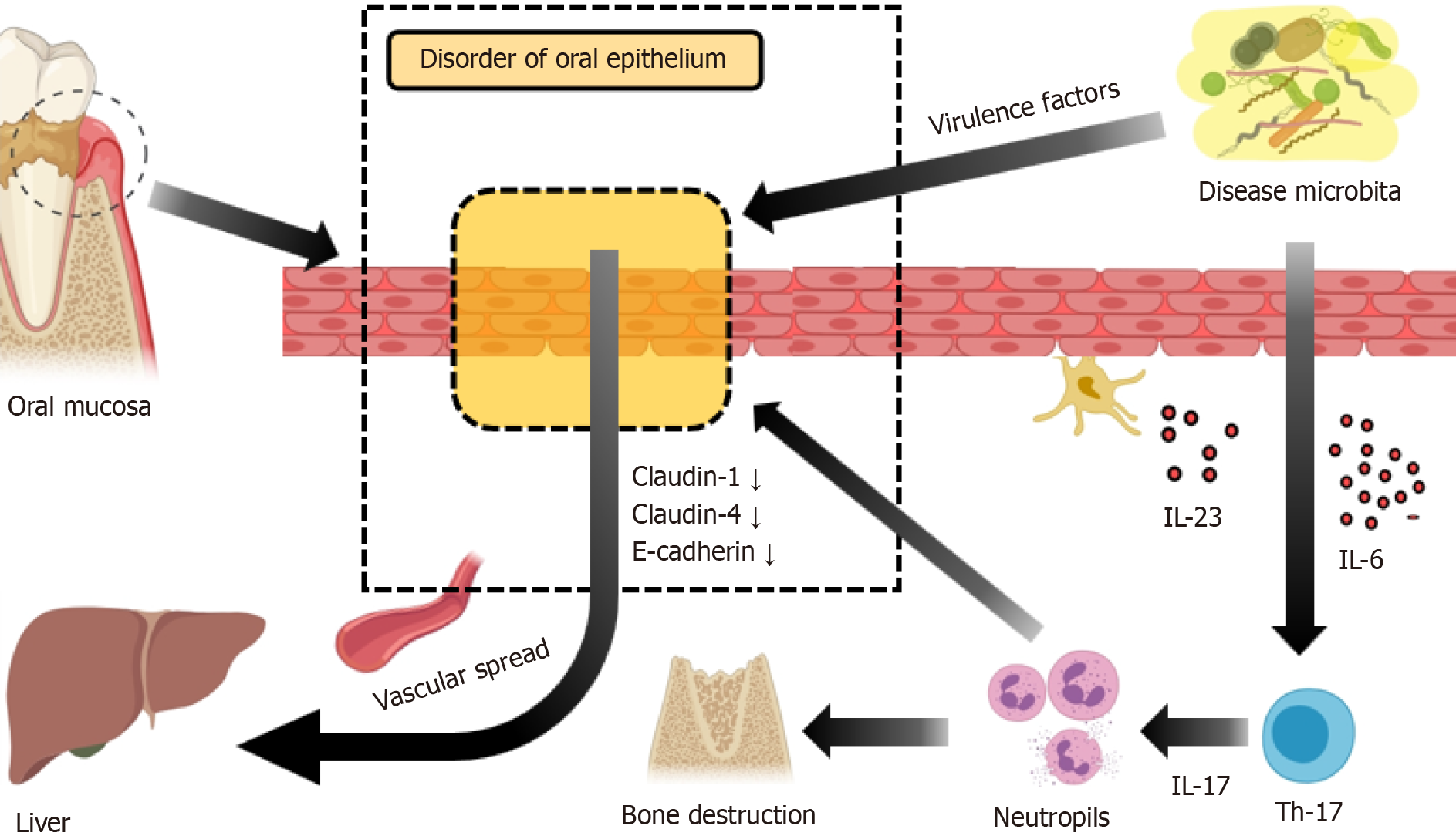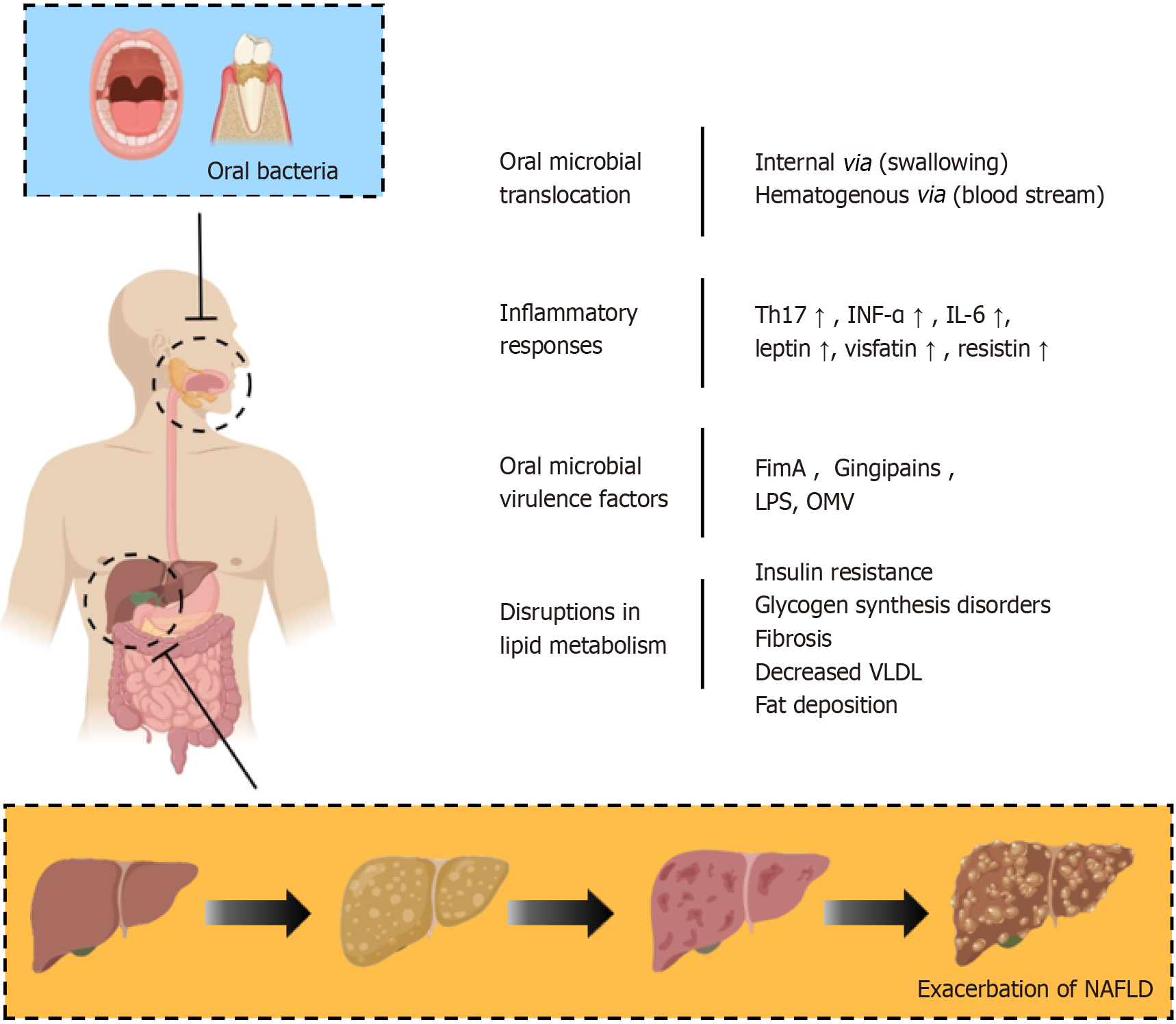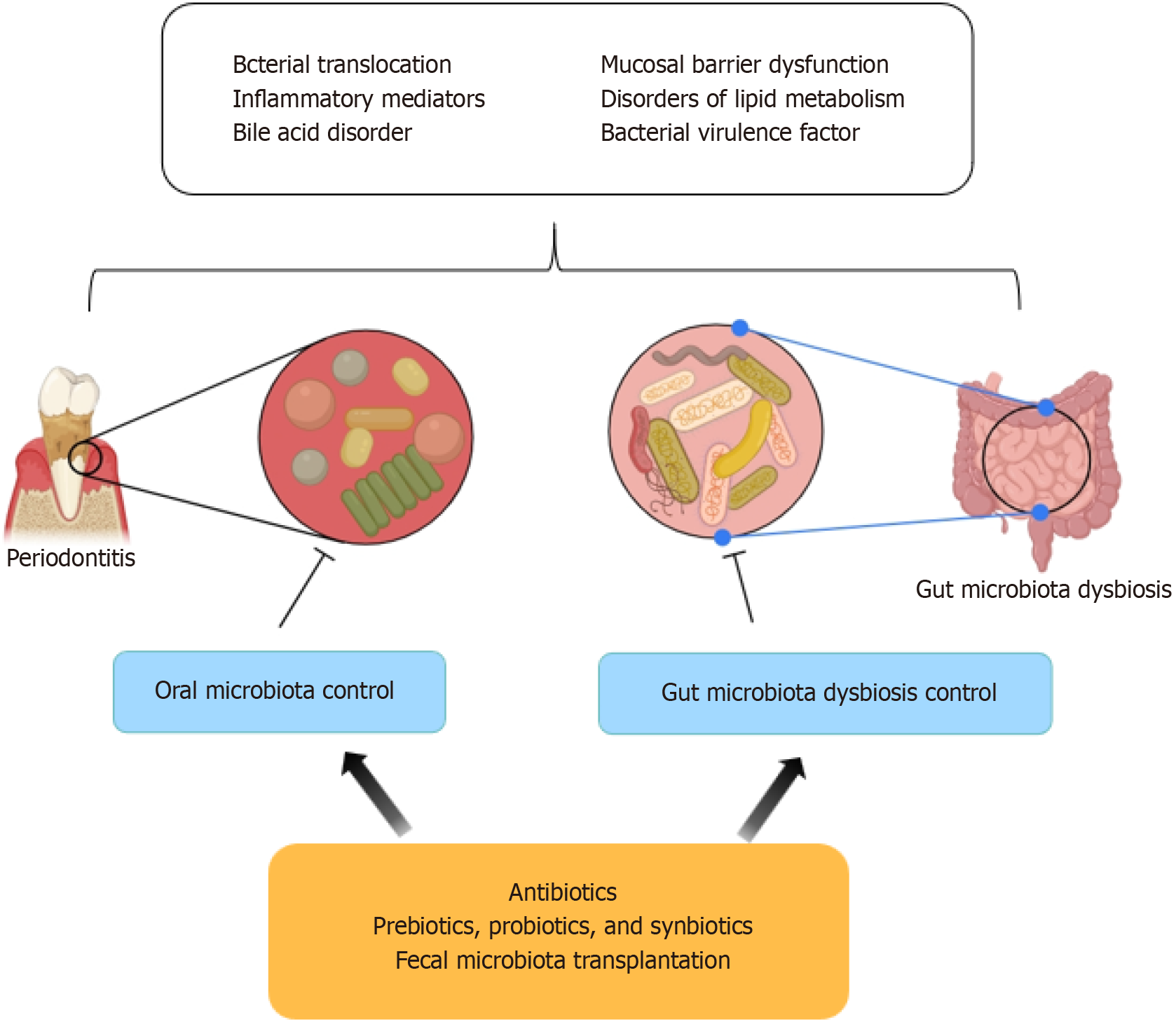Copyright
©The Author(s) 2024.
World J Hepatol. May 27, 2024; 16(5): 688-702
Published online May 27, 2024. doi: 10.4254/wjh.v16.i5.688
Published online May 27, 2024. doi: 10.4254/wjh.v16.i5.688
Figure 1 Disruption of intestinal mucosal barriers by pathogenic microorganisms.
Pathogenic microorganisms elevate levels of pathogen-associated molecular patterns, lipopolysaccharide, ethanol, and secondary bile acids in the intestinal mucosa, leading to a decrease in protective intestinal mucus and short-chain fatty acids. This exacerbates local inflammation and enhances intestinal permeability. As a result, pathogenic microorganisms and their virulence factors are transported to the liver via the portal venous system, facilitating the progression of non-alcoholic fatty liver disease. PAMP: Pathogen-associated molecular; LPS: Lipopolysaccharide; NASH: Non-alcoholic steatohepatitis; TNF-α: Tumour necrosis factor alpha; INF: Interferon; SCFAs: Short-chain fatty acids.
Figure 2 Disruption of oral mucosal barriers by pathogenic microorganisms.
Pathogenic microorganisms enhance Th17 cell secretion of interleukin (IL)-17 through stimulating factors, including IL-6 and IL-23, which leads to neutrophil aggregation and activation. Concurrently, oral epithelial cells reduce the expression of Claudin-1, Claudin-4, and E-cadherin, thereby increasing barrier permeability. This alteration elevates the risk of pathogenic microorganisms entering the bloodstream and reaching the liver. IL: Interleukin.
Figure 3 The connection between oral microbiota and non-alcoholic fatty liver disease.
Oral microbiota plays a significant role in advancing liver fat deposition, inflammatory responses, and fibrosis, thus expediting the progression from non-alcoholic steatohepatitis to non-alcoholic fatty liver disease. This effect is mediated through four principal mechanisms: Translocation of oral microbes, inflammatory responses, virulence factors of oral microbes, and disruptions in lipid metabolism. OMV: Outer membrane vesicles; LPS: Lipopolysaccharide; INF-α: Interferon alpha; IL: Interleukin; VLDL: Very-low-density lipoprotein; NAFLD: Non-alcoholic fatty liver disease.
Figure 4 Microbial control strategies for treating non-alcoholic fatty liver disease.
The management of non-alcoholic fatty liver disease (NAFLD) through microbial control includes the use of antibiotics, prebiotics, probiotics, synbiotics, and fecal microbiota suppression to regulate oral and gut microbiomes, maintain microbial balance, and protect mucosal barriers, ultimately reducing the bacterial influence on NAFLD.
- Citation: Mei EH, Yao C, Chen YN, Nan SX, Qi SC. Multifunctional role of oral bacteria in the progression of non-alcoholic fatty liver disease. World J Hepatol 2024; 16(5): 688-702
- URL: https://www.wjgnet.com/1948-5182/full/v16/i5/688.htm
- DOI: https://dx.doi.org/10.4254/wjh.v16.i5.688












